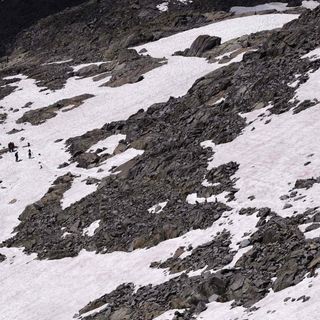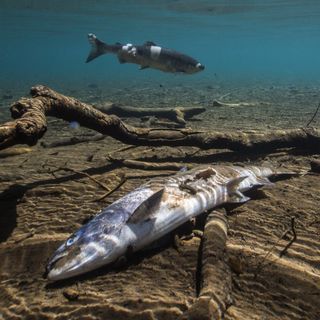The world is heating up at an unprecedented rate because of unchecked greenhouse gas emissions that arise from excessive fossil fuel use. As a result, the amount of carbon dioxide (CO2) in the atmosphere is steadily increasing, warming up the planet, and spelling death and destruction for all species on Earth. Now, scientists have found a novel way to absorb billions of tons of this CO2 from the air: spreading rock dust on farmland.
Published in Nature, the first-of-its-kind detailed analysis of the technique shows that placing calcium- and magnesium-rich silicate rocks, such as basalt, in crushed form, on top of soil causes a chemical reaction that absorb CO2 from the air, trapping it in inorganic bicarbonate form, which ultimately gets washed off with land runoff. This trapped CO2 can then be stored in the oceans, as limestone, for up to 100,000 years, which scientists from the University of Sheffield’s Leverhulme Centre for Climate Change Mitigation and Energy Institute say also has the power to reduce ocean acidification.
If applied on a large scale — about half of farmland in the world — this rock dust approach could capture 2 billion tons of CO2 from the air, removing about half of the greenhouse gases currently produced by Europe.
Moreover, scientists say this rock dust approach, layered on top of how farmers are already adding limestone to their farmland to reduce acidification, can even improve the quality of the soil, tackling food insecurity. This can work in countries such as India, which has large areas of farmland and warm weather perfectly suited for widespread carbon capture.
Related on The Swaddle:
Extinction Rebellion: How Climate Crisis Advocacy Became a Social Justice Battleground
In order to limit the planet’s temperature rise to less than 2 degrees Celsius, it’s imperative we remove the CO2 already present in air, scientists write. Cutting fossil fuel use to prevent more CO2 from accumulating in the atmosphere, however, still remains a priority. In the meantime, this approach, called enhanced rock weathering, can help manage the temperatures at current levels.
The rock dust approach falls under the larger umbrella of carbon capture, a practice which encompasses methods such as using chemical solvents to capture carbon emissions at the site of release, such as factories, and storing it in places where it will not enter the atmosphere. Enhanced rock weathering, scientists say, can be cheaper than existing methods of carbon capture, and easier to implement.
That said, scientists admit this approach needs long-term trials in the real world, which test the efficacy of this approach on a large scale, while also tackling what would happen if the demand for mineral-rich rock suddenly increased globally. For example, demand for crushed rock could increase mining and grinding, operations which consume large amounts of energy that in turn contributes to greenhouse gas emissions.
“China, the United States and India are all vulnerable to climate change and resultant sea-level rise,” the study said. “Their high risks of economic damage and social disruption provide impetus for creative co-design of agricultural and climate policies.”




